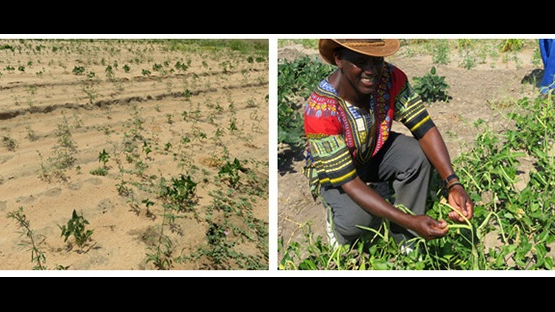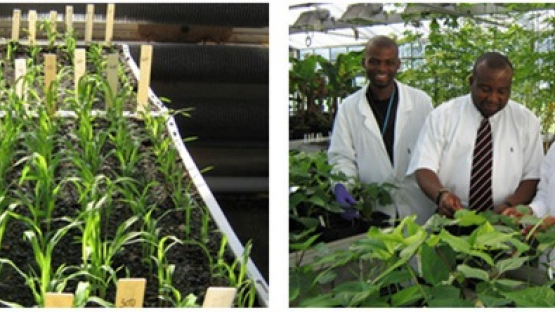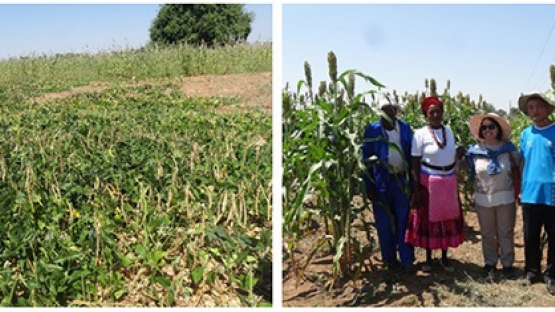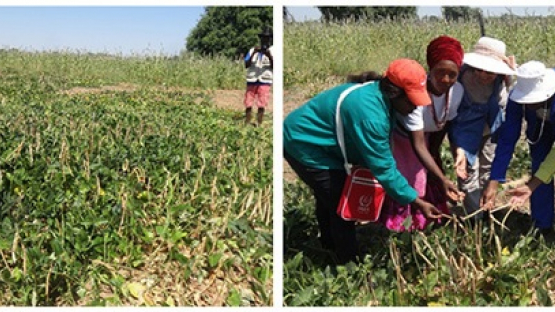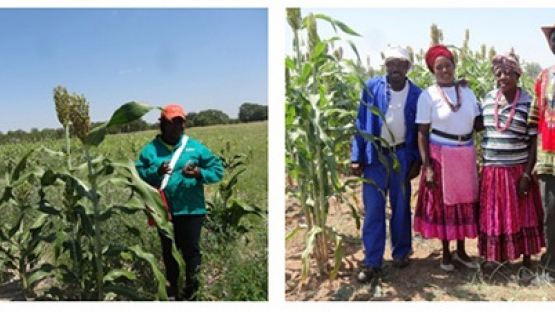The IAEA technical cooperation project NAM/5/009: “Using Mutation Breeding and Integrated Soil Plant Management Techniques to Develop Sustainable, High Yielding and Drought Resistant Crops of Pearl Millet, Sorghum and Cowpea” was set up in 2009 as a collaboration between the Government of the Republic of Namibia through the Ministry of Agriculture, Water and Forestry and the International Atomic Energy Agency (IAEA), with the support of the Joint FAO/IAEA Centre of Nuclear Techniques in Food and Agriculture.
The objective of the project was to apply plant mutation breeding and soil management techniques to develop new mutant lines/varieties with high yield potential and enhanced tolerance to drought conditions for drought affected farms. Seeds of local varieties of cowpea, sorghum and pearl millet were treated with gamma rays at the FAO/IAEA’s Laboratories, Seibersdorf, Austria.
The treated seeds were shipped back to Namibia and planted, and a mutation breeding programme was initiated by the Ministry of Agriculture, Water and Forestry. Three crop research stations have been involved in developing new improved mutant varieties: Omahenene in the North West, Mannheim in the North Central and Bagani Research in the North East of Namibia. The R&D effort in Namibia was supported by the Joint FAO/IAEA Centre in 2009 in the form of a fellowship training programme in plant mutation breeding at the FAO/IAEA Laboratories, Seibersdorf, Austria.
In subsequent years, several young scientists (eight in plant breeding and eight in soil and water management) have been trained in nuclear techniques applied in plant mutation breeding and soil and water management. The training targeted techniques that produce desired mutants and those that could be used in developing and advancing selected mutant lines for field performance trials in Namibia for drought tolerance in cowpea, sorghum and pearl millet.


